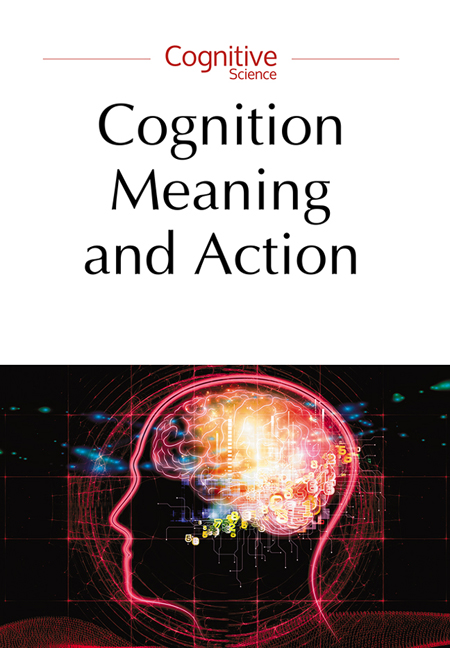Book contents
- Frontmatter
- Contents
- The crossroads of cognitive science
- Cognitive science: From computers to ant hills as models of human thought
- Two procedures expanding a linguistic competence
- Neurobiological basis for emergence of notions
- Similarity as distance: Three models for scientific conceptual knowledge
- The Approximate Numbers System and the treatment of vagueness in conceptual spaces
- Communication, cognition, and technology
- To tell and to show: The interplay of language and visualizations in communication
- Semiotics, signaling games and meaning
- Out of the box thinking
- The everyday of decision-making
- Short- and long-term social interactions from the game theoretical perspective: A cognitive approach
- Notes about Authors
Communication, cognition, and technology
Published online by Cambridge University Press: 10 January 2018
- Frontmatter
- Contents
- The crossroads of cognitive science
- Cognitive science: From computers to ant hills as models of human thought
- Two procedures expanding a linguistic competence
- Neurobiological basis for emergence of notions
- Similarity as distance: Three models for scientific conceptual knowledge
- The Approximate Numbers System and the treatment of vagueness in conceptual spaces
- Communication, cognition, and technology
- To tell and to show: The interplay of language and visualizations in communication
- Semiotics, signaling games and meaning
- Out of the box thinking
- The everyday of decision-making
- Short- and long-term social interactions from the game theoretical perspective: A cognitive approach
- Notes about Authors
Summary
Introduction
The most likely form taken by the first human communication was gestures and miming. The body is still an important component in a direct conversation with other people. However, humans are the only animals who have developed a spoken language as our primary tool for communication. Dialogue is our most genuine form of interaction and it will be our point of departure when we compare different forms of communication supported by technology.
Since early in the history of Homo sapiens, we have used different media for communication. The oldest are cave paintings that are about 40 000 years old. But it is above all written language that has influenced our way of mediating thoughts. The oldest forms of writing are about 5000 years old.
The last few centuries have seen rapid development of different technologies for communication. Printing was invented a little more than 500 years ago. Telegraphy and photography are about 150 years old. Bell invented the telephone in 1876, Marconi made the first radio transmissions in 1895, Edison taught us how to record sound 100 years ago, and moving pictures are equally old. In the last 50 years we have seen how the fax, the television, the computer and the mobile phone have radically influenced our ways of communicating with other people.
Imagine, for example that your boyfriend or girlfriend travels to New York to study for a semester. Unfortunately, you are unable to go along. What types of communication technologies will you use to keep your love alive? A handwritten letter is of course very personal, but it will take time before it reaches the addressee. E-mail is an excellent form of communication over long distances for keeping in touch with people; it is fast, cheap and you can write long messages.
Texting an SMS by mobile phone is not a bad solution but is more suitable for short messages. However, if you want to express your feelings and get an immediate response, the telephone (or the videophone) is the superior medium to “feel close to” the other person. A disadvantage is of course the time difference: you cannot call at any time that suits you.
- Type
- Chapter
- Information
- Cognition, Meaning and ActionLodz-Lund Studies in Cognitive Science, pp. 109 - 122Publisher: Jagiellonian University PressPrint publication year: 2015



